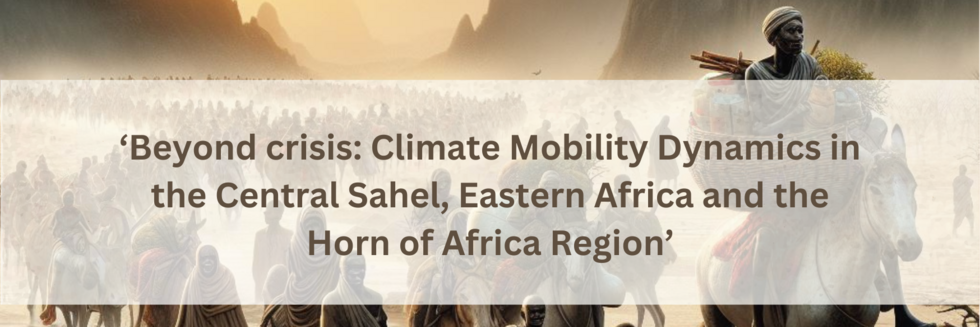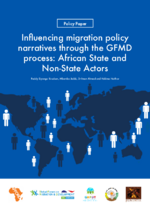Beyond Crisis: Climate Mobility Patterns in the Central Sahel, East Africa and the Horn of Africa Regions.
However, gaps in data and information – like in many other migration thematic areas – is a challenge whenever working on climate mobility. This is because the nexus between climate change and migration is a relatively recent area of work. In addition, it is very complex to understand if climate change is a direct cause of migration or a contributor/catalyst. This is also true in the case of the phenomenon in Africa. Based on UNHCR data, around 30 million internally displaced persons, refugees and asylum-seekers live in Africa, representing almost one-third of the world’s refugee population.
Recognizing this, the FES African Migration Policy Center (FES AMPC) and the Institute of Peace and Security Studies (IPSS) commissioned a study focusing on the Central Sahel, East Africa and the Horn of Africa regions. The purpose of the study was to review policy and academic publications written on the link between climate change and mobility in the aforementioned regions. Making use of over 150 policy and academic literature in the three regions, the study project had the objective of identifying common themes in the three regions when it comes to climate migration and displacement. It also attempts to identify which areas require more research in each of the three regions.
The study found that the three regions are amongst the regions that are most vulnerable in Africa to both slow and onset rapid hazards of migration. In addition, the regions are mostly agrarian and pastoralist which increases the vulnerability of livelihoods of communities in these regions. As a result, mobility driven by climate change triggers movement from rural to urban areas as communities search for other economic opportunities. The study also analyzed policy responses to climate mobility in the three regions. Read more on our climate mobility research by downloading the study using the link below.
Click the link below to read the paper:
Beyond crisis: climate mobility dynamics in the Central Sahel, East Africa and the Horn of Africa
Contact
Friedrich-Ebert-Stiftung
African Migration Policy Center
Arada Kifleketema
Queen Elizabeth II street
P.O. Box 8786
Addis Ababa, Ethiopia







